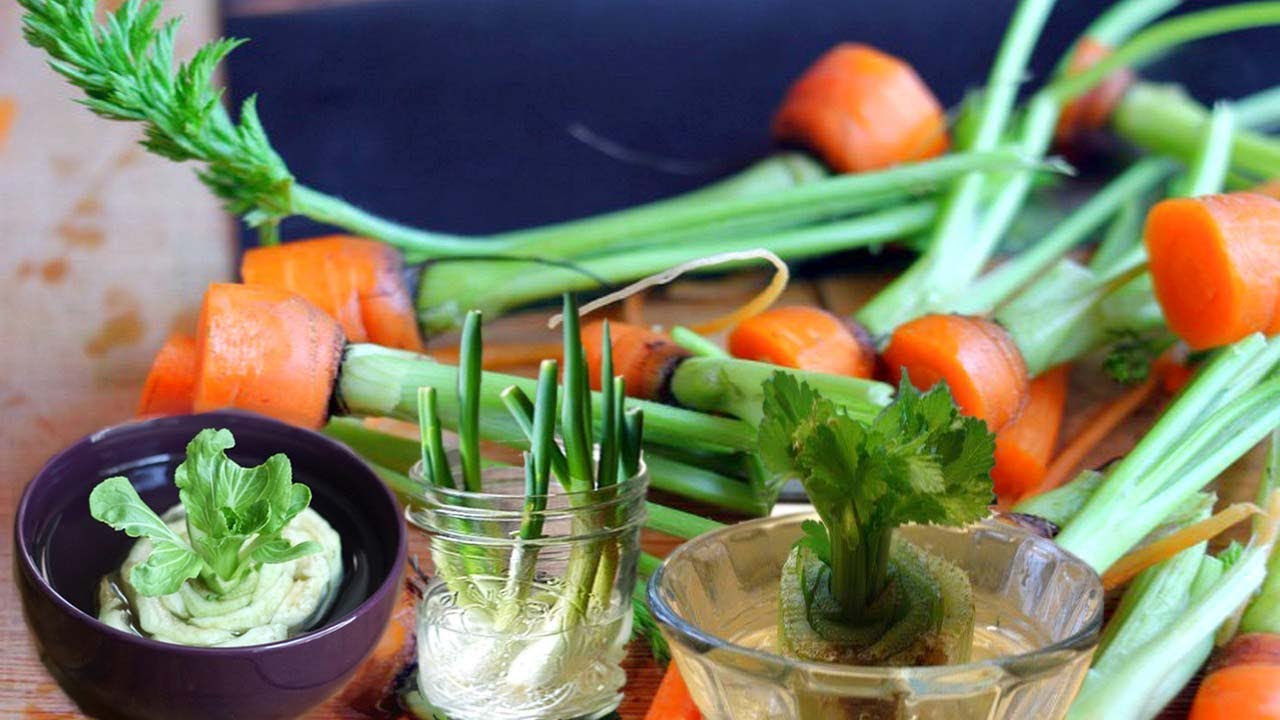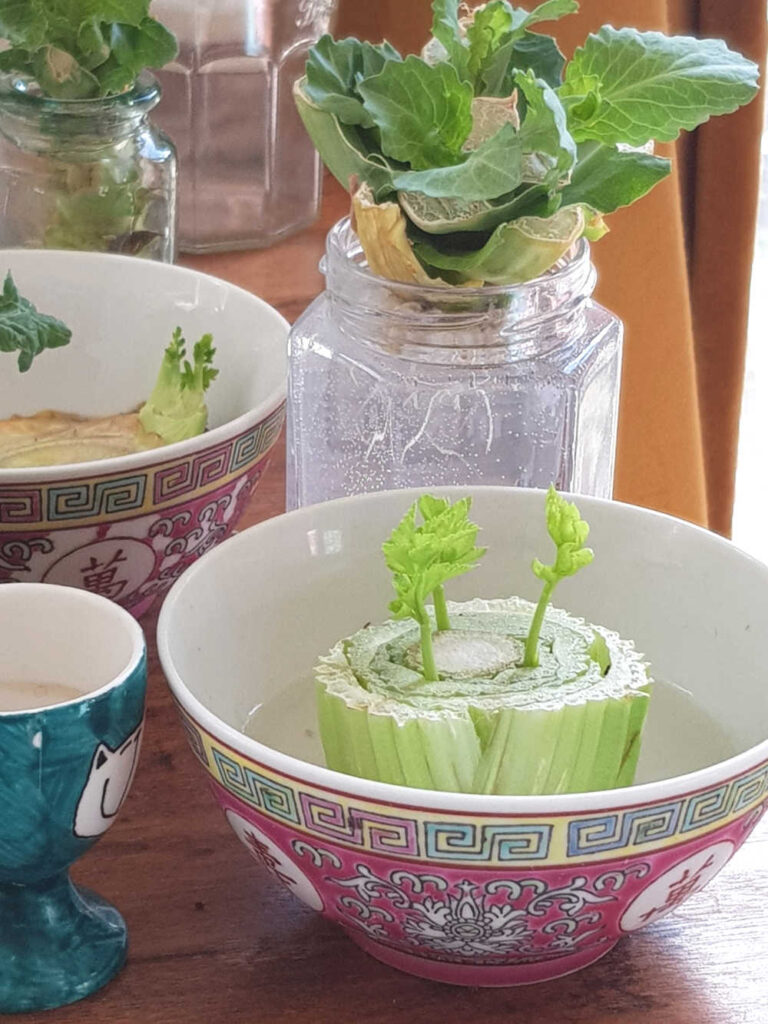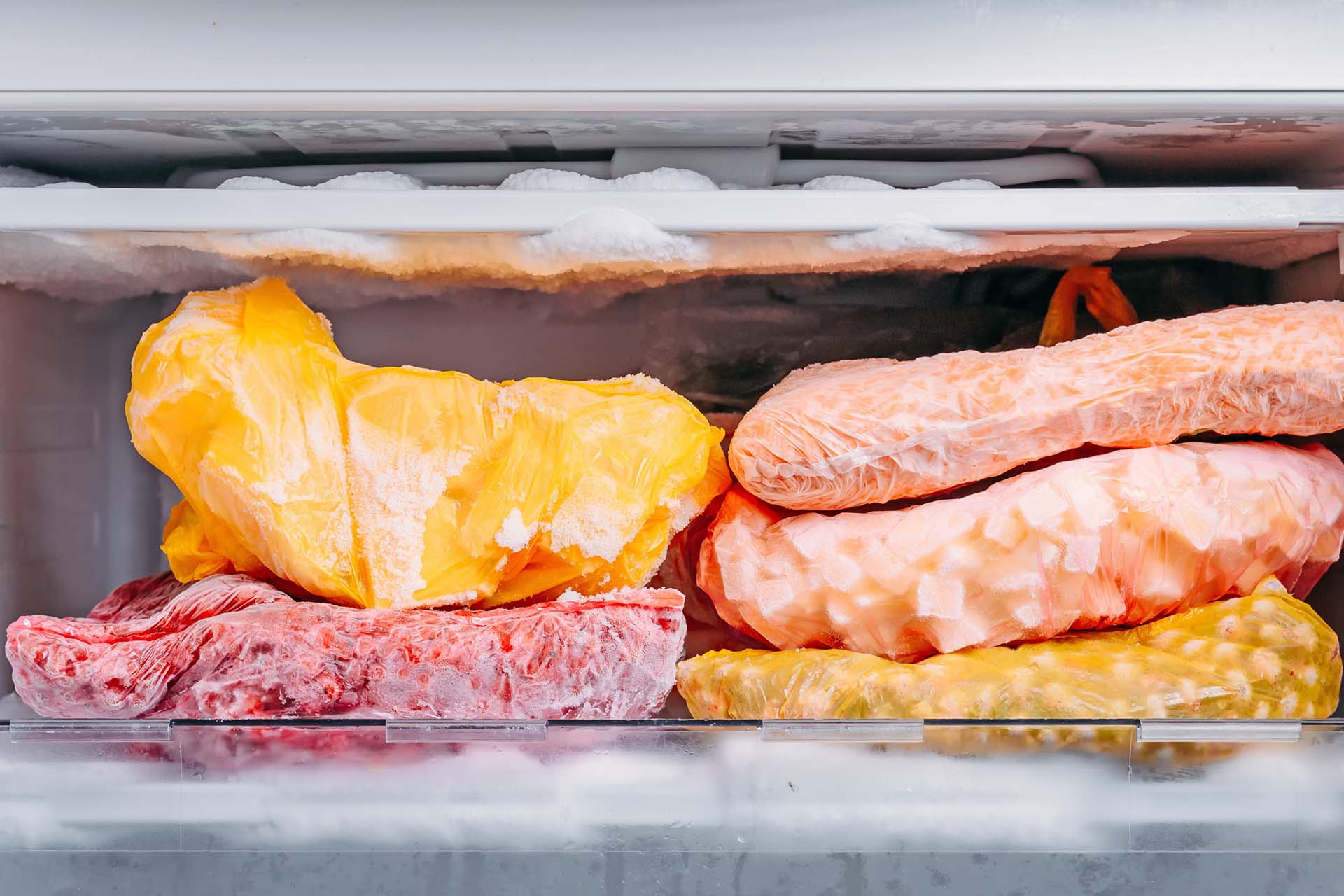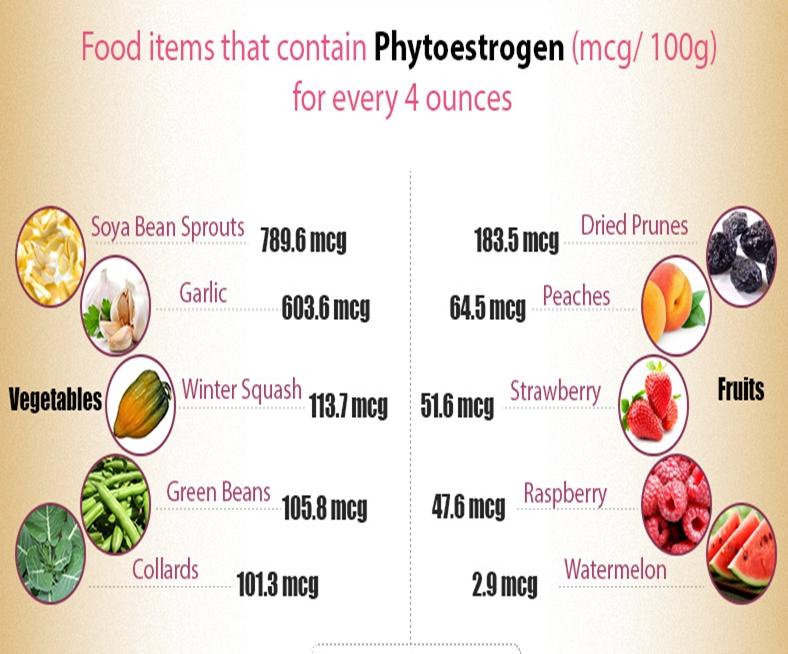Growing vegetables from scraps is a low-cost and sustainable way to enjoy fresh produce. It requires minimal effort, resources, and prior gardening experience. Here’s a detailed guide to help you successfully grow vegetables from scraps:

Select Suitable Scraps:

- Choose scraps from organic or pesticide-free vegetables to avoid introducing harmful chemicals into your garden.
- Good options include carrot tops, celery bottoms, onion bulbs, lettuce stumps, and potato peelings.
Prepare the Scraps:

- Cut off the lower inch or two of the scrap, ensuring the part still intact has roots or growth points.
- If the scrap has multiple shoots or leaves, separate them into individual pieces.
Choose a Growing Method:
Plant the Scraps:
Provide Proper Conditions:
- Place the container or garden bed in a warm, sunny location that receives at least 6 hours of direct sunlight daily.
- Maintain the right temperature for the specific vegetable you’re growing.
- Ensure good air circulation to prevent fungal diseases.
Water and Fertilize:
- Keep the soil or water moist but not soggy.
- Use a balanced fertilizer, following the package instructions, to provide essential nutrients for growth.
Monitor and Harvest:
- Regularly check the growth and development of your vegetables.
- Harvest the fully-grown vegetables when they are ripe and ready.
- Cut them above the root system so that the plant continues to grow.
Replant Scraps:
- After harvesting, you can replant the scraps in soil or water to grow a new crop.
By following these steps, you can enjoy fresh vegetables grown from scraps, reducing food waste and adding variety to your diet. Remember that success may vary depending on the type of vegetable and growing conditions, but with patience and care, you’ll be able to grow delicious vegetables from kitchen scraps.










